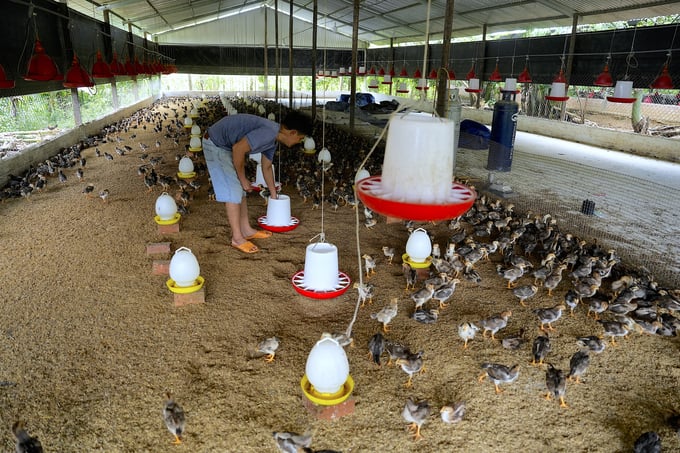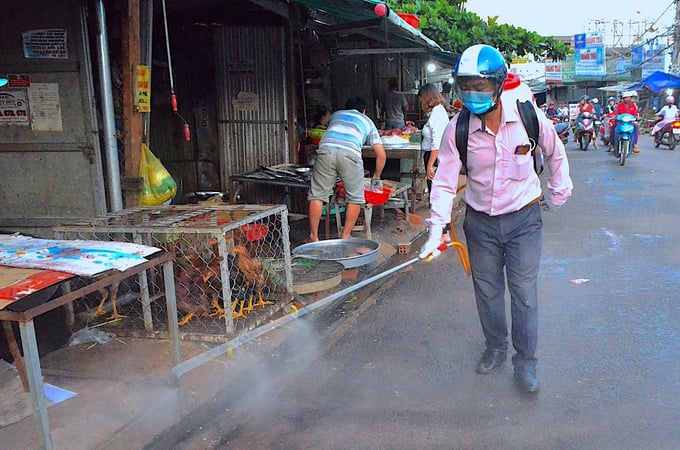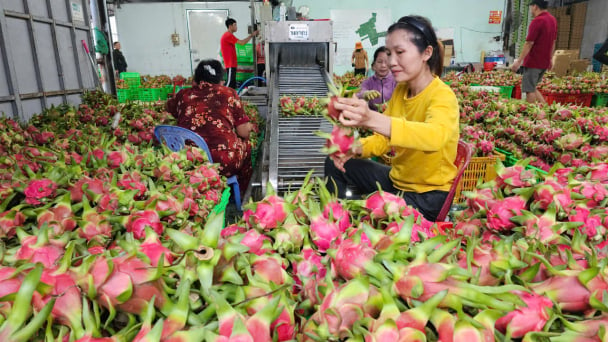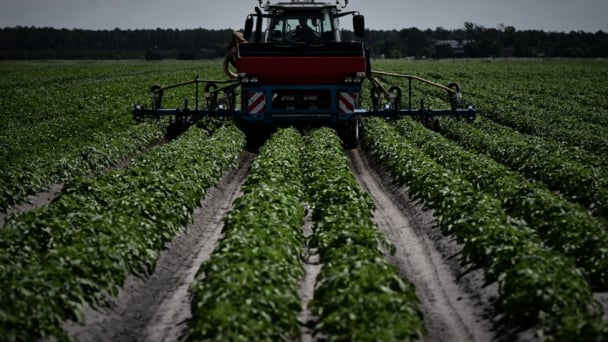June 18, 2025 | 19:55 GMT +7
June 18, 2025 | 19:55 GMT +7
Hotline: 0913.378.918
June 18, 2025 | 19:55 GMT +7
Hotline: 0913.378.918

Tran Van Thang's hybrid chicken farm. Photo: Hong Thuy.
According to the report from Dak Nong Department of Agriculture and Rural Development, this province’s poultry herd is estimated at nearly 3.2 million at present, an increase of more than 0.9 million compared to the same period in 2023, equal to 104% of the year plan. There are currently 66 large-scale poultry farms, and over 25,000 household and small-scale poultry farming models, concentrated in Tuy Duc, Dak Song, Krong No, and Cu Jut districts.
Dak Mil district is in the spotlight as one of the localities with a strong increase in poultry herds, reaching nearly 510,000 heads, an increase of approximately 85,000 heads compared to the same period last year. The district has 17 chicken farms and 4 duck farms in total. Farm-scale livestock models are also showing strong developments.
The super meat duck farming model of Nguyen Tang Hung (Dak Gan commune, Dak Mil district), although only on a household scale, is quite effective. Despite the price of materials and animal feed remaining high since the start of the year, Hung has still maintained a stable flock of 7,000 ducks.
Increasing the size of the flock means a higher potential for disease outbreaks. What Hung is concerned about is duck viral enteritis (DVE, or duck plague) as it is one of the most common and fatal diseases in ducks. All breeds of ducks of all ages can catch the disease. When ducks get sick, the main symptoms are high fever, swollen heads, watery eyes, weak legs, paralysis, and green poop.
"To prevent the disease, we must buy ducklings with clear origins from reputable establishments. It is best to produce our own ducklings. The ducks should be vaccinated against duck plague right as soon as they arrive at the farm. If the supplier has already vaccinated ducks for meat, there is no need for a second vaccination. As for egg laying ducks, we must vaccinate after 45 days and every 6 months. Keep the food source, barn, and duck release area clean. When raising large numbers, we must become even more attentive to the hygiene of the barns," said Hung.

Nguyen Tang Hung's flock of super meat ducks are always healthy thanks to good disease prevention measures. Photo: Hong Thuy.
Tran Van Thang’s family, one of the households with a long-standing chicken farming model in Dak Sin commune, Dak R'lap district, is currently raising a flock of more than 1,000 hybrid chickens in the form of semi-free-range.
“I have been raising chickens for nearly 20 years now. I have also tasted failure because of disease, so I have accumulated a lot of experience. To raise chickens safely, first of all, you must buy chickens from reputable sources. The chickens must be of good quality and certified by the relevant authorities. When imported, they must be vaccinated immediately. During the raising process, disease prevention measures must always be strictly followed. Increase the chickens' resistance by using biological products such as crushed garlic mixed with bran, and plant many lemongrass bushes in the garden for the chickens to eat,” said Thang.
According to Ho Gam, Chairman of Dak Nong Farmers' Union, through coordination and exchange of information with the local agricultural sector, since the beginning of the year, the poultry flock in Dak Nong province has grown strongly.
To ensure the safety of the flocks, functional sectors and localities have strengthened communication, mobilized farmers and provided support to implement disease safety measures. Specialized agencies increase inspection and control to make sure high-quality seeds with clear origins are supplied to the market.

Disinfection and sterilization of poultry breeding, trading and consumption areas are carried out periodically to prevent disease. Photo: Hong Thuy.
“In the first half of 2024, through local authorities, we learned that there were no dangerous disease outbreaks in Dak Nong province, and the health of Dak Nong's poultry flocks was always stable. This result was achieved thanks to the close attention of the agricultural sector through regular sampling and testing to detect outbreaks early. Activities related to sanitation, disinfection of the environment and barns at high-risk locations such as traffic hubs, border gates, markets, and slaughterhouses are regularly carried out by the provincial authorities,” said Ho Gam, Chairman of Dak Nong Farmers' Union.
Translated by Samuel Pham

(VAN) According to the Binh Thuan Department of Industry and Trade, in the first five months of 2025, Binh Thuan's dragon fruit export turnover increased by 20.65% compared to the same period last year.

(VAN) EU countries on Thursday gave final approval to new tariffs on fertilizer imports from Russia, a move aimed at cutting off revenue that could support Moscow’s war in Ukraine, despite concerns from European farmers.

(VAN) The working delegation from the Ministry of Agriculture and Environment conducted an important trip to the Netherlands to strengthen strategic partnerships and sustainable development in the agricultural sector.

(VAN) The letter ‘A Plea from the Ocean’ not only evokes emotion but also awakens the human conscience to the responsibility of protecting life on Earth.

(VAN) The Department of Agriculture in South Africa has announced the country’s first mass vaccination of poultry to prevent local birds from contracting avian influenza.

(VAN) Establishment of the Mekong Delta Regional Agricultural Linkage Center, aiming for a closed value chain, deep processing, trading platforms, and international market connectivity.

(VAN) Gia Lai province has recently recorded 460 rare species of animals and plants, contributing to forest conservation and biodiversity planning in the region.